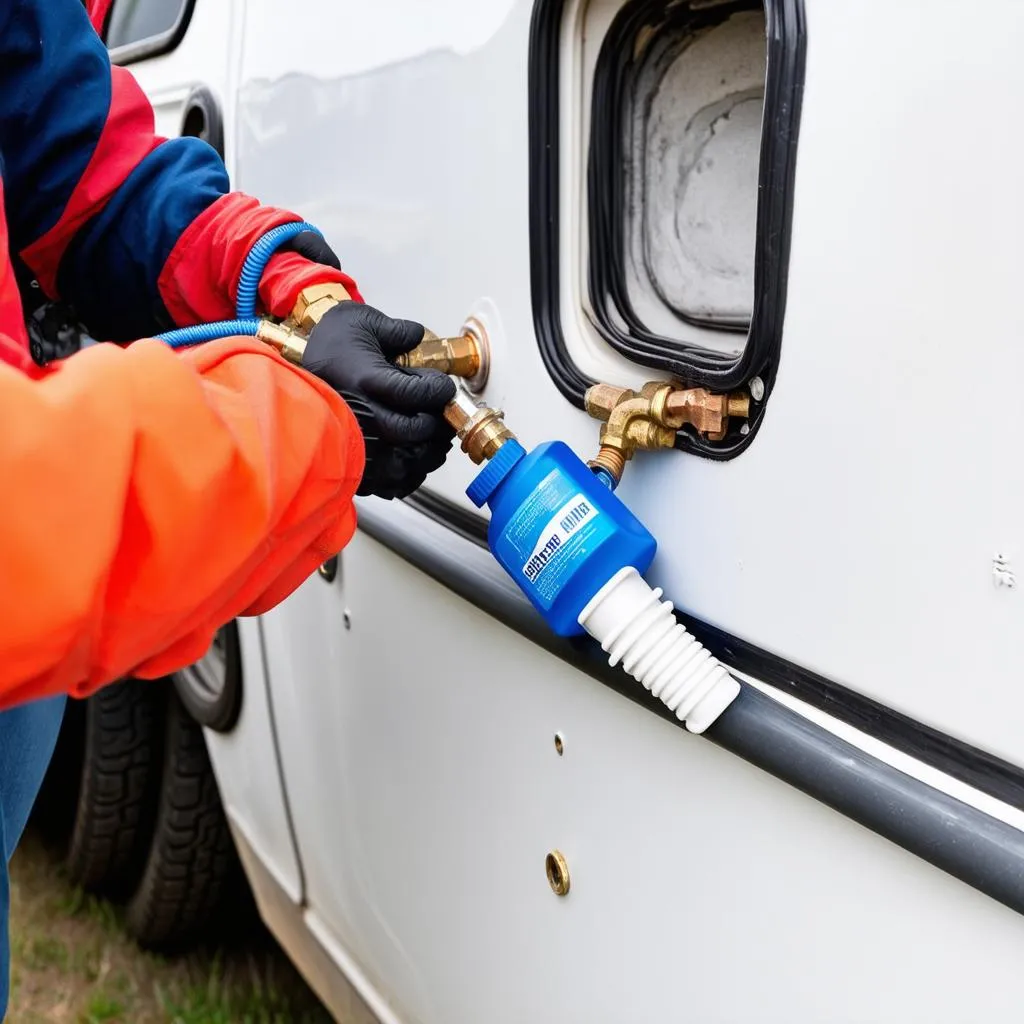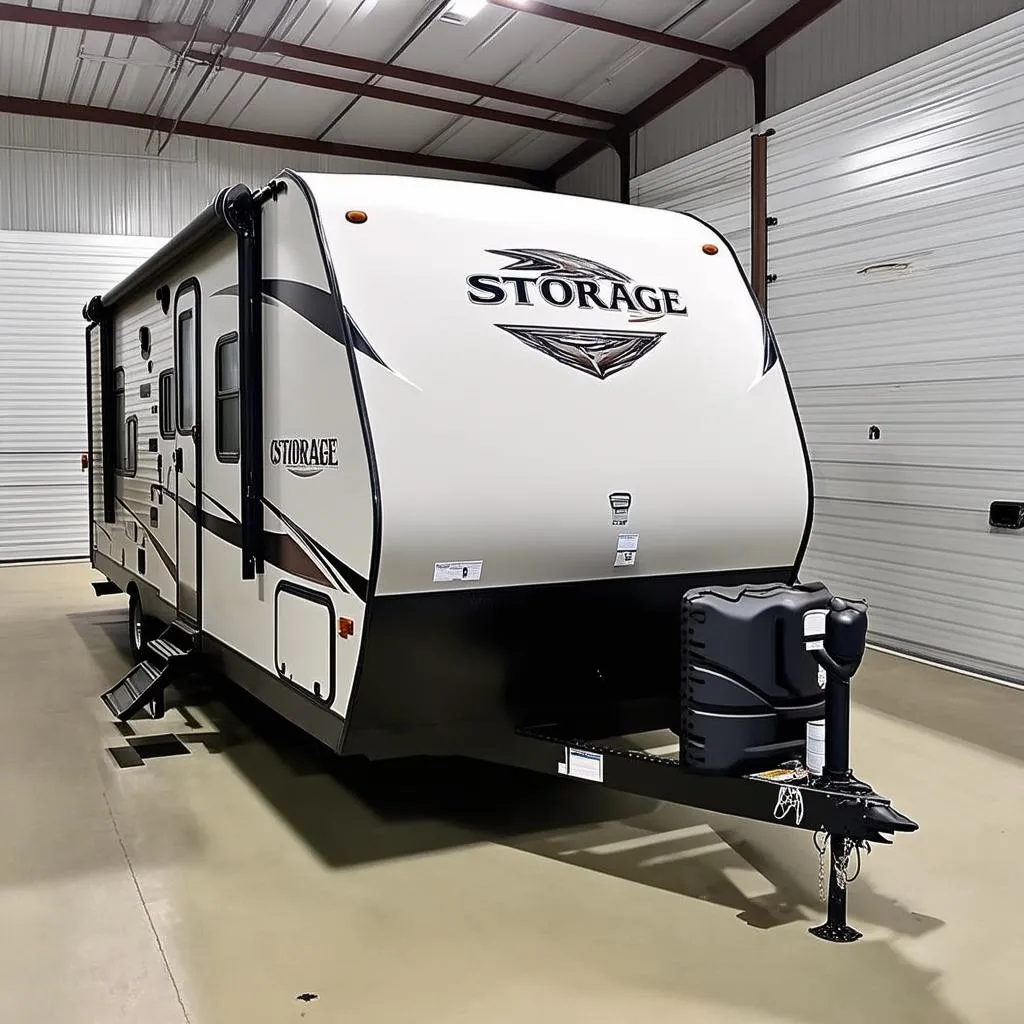Remember that epic road trip you took last summer? Cruising down Route 66, soaking in the sun, and exploring national parks from Yellowstone to Yosemite? Well, winter is coming, and just like a bear preparing for hibernation, your trusty travel trailer needs a little TLC before the snow flies. Neglecting to winterize it properly can lead to costly repairs and a delayed start to next year’s adventures.
Don’t worry, we’ve got you covered! This guide will walk you through everything you need to know about How To Winterize Your Travel Trailer, ensuring it’s safe, sound, and ready to hit the open road when spring fever hits.
Why Winterize Your Travel Trailer?
Think of winterizing your travel trailer like putting on a warm coat, hat, and gloves before heading out into a blizzard. It’s all about protection! Freezing temperatures can wreak havoc on your RV’s plumbing system, leading to burst pipes, cracked fixtures, and a watery mess you definitely don’t want to deal with.
“Failing to winterize your RV is like leaving your house unlocked in a bad neighborhood,” warns seasoned RVer and author, Sarah Jenkins, in her book “RV Living for Beginners.” “You’re just asking for trouble.”
Proper winterization safeguards your investment, prevents costly repairs, and guarantees a smooth start to your next travel season.
How To Winterize Your Travel Trailer: Step-by-Step
Winterizing your travel trailer might seem daunting, but it’s a manageable task if you break it down into steps. Here’s a comprehensive guide to get you started:
1. Empty and Clean
Water System:
- Drain Your Tanks: Start by completely draining your fresh water tank, gray water tank, and black water tank. Find a designated dumping station or use an approved dumping method.
- Purge the Lines: Use an air compressor or a hand pump to blow out any remaining water in the lines. Don’t forget to open all faucets, including the shower and toilet valves.
- Water Heater: Drain your water heater completely. If you’re not comfortable doing this yourself, consult your owner’s manual or a qualified RV technician.
Interior:
- Remove Food and Perishables: Empty your refrigerator and pantry, removing all food items. Crumbs can attract unwanted critters!
- Clean Thoroughly: Give your travel trailer a deep clean, including vacuuming, wiping down surfaces, and cleaning the bathroom.
- Moisture Absorbers: Place moisture absorbers like DampRid throughout your camper to prevent mold and mildew growth.
2. Protect Your Plumbing
Antifreeze is Key:
- Use RV-Specific Antifreeze: Never use automotive antifreeze! It’s toxic and can damage your RV’s plumbing system.
- Follow Instructions: Refer to your owner’s manual or the antifreeze bottle for specific instructions.
- Run Through System: Pour the antifreeze into your water system, making sure it runs through all faucets, the shower, and the toilet.
Don’t Forget:
- Water Filter: Remove your water filter and bypass it if possible.
- Exterior Shower: Don’t overlook your exterior shower! Drain and winterize it according to your owner’s manual.
3. Exterior Prep
Seal It Up:
- Check for Leaks: Inspect your roof, windows, and doors for any potential leaks. Seal any cracks or gaps with RV-specific sealant.
- Cover Vents: Cover your roof vents to keep out rain, snow, and pests.
Protect Your Wheels and Tires:
- Tire Pressure: Adjust your tire pressure according to your owner’s manual.
- Tire Covers: Use tire covers to shield them from the elements, preventing cracking and fading.
- Leveling Jacks: Make sure your travel trailer is level to prevent tire stress.
4. Interior Precautions
Appliances and Electronics:
- Unplug Everything: Disconnect all appliances, including your refrigerator, microwave, and TV.
- Remove Batteries: Remove batteries from smoke detectors, clocks, and other devices.
Furniture and Belongings:
- Cover Mattresses: Use mattress covers to protect them from dust and moisture.
- Remove Valuables: Bring any valuable belongings inside your home for safekeeping.
5. Storage Considerations
Location is Key:
- Level Ground: Store your travel trailer on level ground to prevent strain on the frame.
- Covered Storage: Ideally, store your RV indoors or under a covered structure to shield it from the elements.
Security:
- Lock It Up: Ensure all windows and doors are securely locked.
- Wheel Chocks: Use wheel chocks to prevent movement.
- Security System: Consider installing a security system for added protection.
Winterizing Your Travel Trailer: FAQs
Q: Can I use regular antifreeze?
A: Absolutely not! Regular automotive antifreeze is toxic and can cause serious damage to your RV’s plumbing system. Use only RV-specific antifreeze.
Q: How often should I check on my stored travel trailer?
A: It’s a good idea to check on your RV every few weeks, especially after storms or extreme temperature changes. Look for any signs of leaks, damage, or pest activity.
Q: Can I winterize my travel trailer myself?
A: Yes, many RVers successfully winterize their own trailers. However, if you’re not comfortable with the process, it’s best to consult your owner’s manual or seek assistance from a qualified RV technician.
Travelcar.edu.vn: Your Winterization Resource
Winterizing your travel trailer is an essential part of RV ownership, but it doesn’t have to be overwhelming. By following these steps, you’ll ensure your RV is safe, sound, and ready for adventure when the warmer months return.
For more helpful tips and resources on all things RV, visit Travelcar.edu.vn. We offer a wealth of information, from choosing the right RV to planning unforgettable road trips.
Ready to explore the open road? Check out our articles on breathtaking destinations like the scenic Pacific Coast Highway, the historic Route 66, and the awe-inspiring Grand Canyon National Park.
 RV plumbing winterization
RV plumbing winterization
 Travel trailer in covered storage
Travel trailer in covered storage
Start planning your next adventure today with Travelcar.edu.vn!